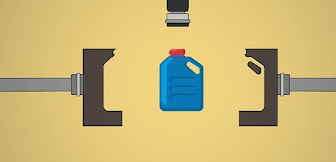The Accidental Invention of Plastic
Introduction The story of plastic is a tale of accidental discoveries that revolutionized industries and daily life.
Lac Beetle
From the natural resin produced by insects to the development of synthetic materials, the evolution of plastic is fascinating, Lac Beetle Resin: The Natural Precursor Long before the invention of synthetic plastic, humans used natural resins derived from the lac beetle, a small insect native to India and Southeast Asia. This resin, known as shellac, was used for various purposes, including varnishes and adhesives Shellac, derived from lac beetle resin, acts as an effective insulator in electrical wires because it does not conduct electricity. This property made it invaluable in early electrical applications, providing a safe and reliable coating for wiring and other components.
Shellac Insulating wire
The Discovery of Shellac Shellac, derived from lac resin, was one of the first materials to be used as a natural plastic. Its flexibility and ability to be molded into shapes made it a precursor to modern plastics. However, the search for synthetic alternatives began as demand for more versatile materials grew. The Birth of Synthetic Plastics The journey towards synthetic plastic began in the late 19th and early 20th centuries. Scientists were experimenting with various chemical reactions to create new materials. One of the most significant breakthroughs came from the combination of phenol and formaldehyde.
Phenol + Formaldehyde + Polymer (Novolac)
In 1907, Belgian chemist Leo Baekeland was experimenting with phenol and formaldehyde to create a new type of resin. The result was a polymer known as Novolac, a precursor to what we now call Bakelite. When heated to 150°C, this polymer transformed into a hard, durable material.
Leo Baekeland
This marked the successful creation of the first true plastic. Bakelite: The First Synthetic Plastic Bakelite was revolutionary. It was non-conductive, heat-resistant, and could be easily molded, making it ideal for a wide range of applications, from electrical insulators to household goods. Its invention paved the way for the modern plastics industry, which has since grown into one of the most significant sectors in the world.
**Did You Know?**
Every year, the world produces over 300 million tons of plastic, much of which ends up as waste. This staggering amount of plastic waste has devastating effects on our environment, particularly in our oceans. Annually, it's estimated that one million seabirds and 100,000 marine animals die due to plastic pollution. The impact of plastic on wildlife and ecosystems is a critical issue that underscores the need for more sustainable practices and solutions.
**Did You Know?**
Every year, the world produces over 300 million tons of plastic, much of which ends up as waste. This staggering amount of plastic waste has devastating effects on our environment, particularly in our oceans. Annually, it's estimated that one million seabirds and 100,000 marine animals die due to plastic pollution. The impact of plastic on wildlife and ecosystems is a critical issue that underscores the need for more sustainable practices and solutions.












No comments:
Post a Comment